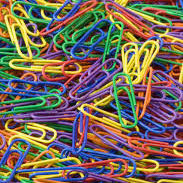Radical Desalination Approach May Disrupt the Water Industry
Columbia Engineering researchers design new desalination method for hypersaline brines that is low-cost, efficient, and effective; could address the growing water challenges across the globe About the Study The study is titled “Membrane-less and Non-evaporative Desalination of Hypersaline Brines by Temperature Swing Solvent Extraction.” A New Paradigm for Desalination New York, NY—May 6, 2019—Hypersaline brines—water Read more about Radical Desalination Approach May Disrupt the Water Industry[…]
